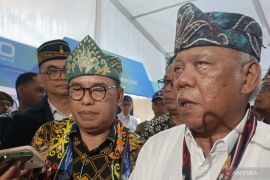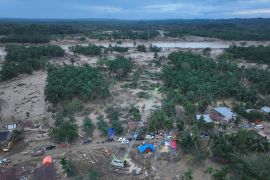This Smart News Release features multimedia. View the full release here: http://www.businesswire.com/news/home/20170831005448/en/
The study, which is entitled Global Value Chains in ASEAN: A Regional Perspective, is one of a 16-paper series on ASEAN GVCs. The AJC has already issued the paper on the Philippines in July 2017, and other 14 papers will be produced subsequently (footnote 1). These papers are based on data on value added trade that AJC has been creating in cooperation with Eora (footnote 2) and the United Nations Conference on Trade and Development.
Major findings of the study include the following:
ASEAN GVCs can contribute significantly to region’s economic development. ASEAN value added in exports created in country (domestic value added – DVA) contributes nearly 35 per cent to the ASEAN region’s GDP in 2013 (figure 1). DVA is the part of exports that contributes to own GDP.
GVC participation by ASEAN is the second largest in the world, only next to EU. Value added exports from ASEAN amounted to $1,418 billion in 2013, 38 per cent or $532 billion of which contains imports from other countries, leaving 62 per cent or $886 billion for the value created domestically (figure 2). The value of imports integrated into a country’s own exports is called foreign value added (FVA), corresponding to the upward part of value chains. Among those foreign inputs used for ASEAN exports, the most important source country until the beginning of the 2000s had long been Japan, followed by the United States (figure 3). However, both countries have lost importance in contributing to ASEAN exports since the mid-2000s. Instead, the shares of ASEAN and Chinese inputs used in their exports have been increasing.
Exports from ASEAN can be also used as intermediate products in other countries’ exports. This downward part of value chains is also an important indicator of GVCs. Combining the upstream part and the downstream part (domestic value added integrated into other countries' exports – DVX) gives the total participation in GVCs. This participation level of 65 per cent is the second largest among regional groups in the world (figure 4). Two thirds of ASEAN exports are associated with GVCs.
Participation in GVCs involves costs. The contribution of GVCs to sustainable development may be limited if the GDP contribution is small because of large FVA and if the countries are locked into low-value added activities.
AJC proposes a general policy framework required for ASEAN GVCs; gaining access to GVCs, benefiting from GVC participation and realizing opportunities to upgrade in GVCs. The general framework consists of the following elements:
* Embedding GVCs in overall development strategies and industrial development policies;
* Enabling GVC growth by maintaining a conducive trade and investment environment and by putting in place infrastructural prerequisites;
* Building productive capacities in local firms;
* Mitigating the risks involved in GVC participation, which requires a strong environmental, social and governance framework; and
* Aligning trade and investment policies, which implies the identification of synergies between the two policy areas and in relevant institutions.
footnote 1: This is a multiyear and first-phase research effort, producing and updating value chain data for individual countries of ASEAN and analytical papers based on the results of these data. Under this multiyear programme, 16 evidence-based and policy-oriented technical reports will be prepared: in addition to this general paper on ASEAN as a whole (Paper 1), individual reports on 10 ASEAN member countries (Papers 2–11) and five selected industries (Papers 12-16) - electronics, automobiles, textiles and clothing, agribusiness, and tourism.
footnote 2: Eora, or the Eora project, is based at the University of Sydney and comprises an international team of researchers who developed the “multi-region input-output database†(www.worldmrio.com) . This database is the basis for value added trade estimates and their database was used in the AJC project on GVCs.
About the ASEAN-Japan Centre
The ASEAN-Japan Centre is an intergovernmental organization established by the ASEAN Member States and Japan in 1981. It has been promoting exports from ASEAN to Japan while revitalizing investment, tourism as well as people-to-people exchanges between the ASEAN Member States and Japan.
URL: http://www.asean.or.jp/en/
View source version on businesswire.com: http://www.businesswire.com/news/home/20170831005448/en/
Contacts
ASEAN-Japan Centre
Ms. Hiroko Ishige, +81-3-5402-8118
Planning & Coordination Office
ajc-pr@asean.or.jp
Source: The ASEAN-Japan Centre
Reporter: PR Wire
Editor: PR Wire
Copyright © ANTARA 2017












